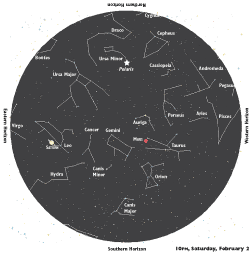|
|
|
||||||||||
|
|||||||||||
|
|||||||||||
Digging into the Groundhog MythHalfway through winter, this holiday goes back deep in time
Groundhog Day, February 2, has far more significance than Punxatawney Phil might lead you to believe. Falling midway between winter solstice and spring equinox, February 2 is one of the four cross-quarter days and a holy day long pre-dating Christianity. For the ancient Gaelic cultures of Western Europe and Britain, this day marks the beginning of spring: The ground has begun to thaw, sheep have begun producing milk for their coming offspring and daylight returns at an ever-increasing clip. Called Imbolc, or Olmelc, which means ewe’s milk, the holy day began at sunset on February 1 and continued through sunset February 2. At this time, the mother-goddess Brigid returns, much like the Roman goddess Ceres, purifying the earth and making it and its creatures fertile. People feasted and danced, lighting candles to guide her and setting out loaves of bread to nourish her. Those rituals live on in Christianity: the goddess Brigid became a saint, with the Feast of St. Brigid celebrated February 1, and Imbolc melded into Candlemas and the Feast of the Purification of Mary. By ancient Jewish rites, women went through a 40-day cleansing following the birth of a boy, 80 days after a daughter. Only then could the mother return to temple with her newborn. February 2 marks Jesus’ first appearance at temple, 40 days after his birth. Upon seeing the infant, the holy man Simeon proclaimed Jesus “a light for revelation” [Luke 2:21]. That light of revelation is spread with the blessing and lighting of candles on Candlemas, and the offering of bread survives in churches’ seasonal pancake suppers. Illustration: © Copyright 1925 M.C. Escher/Cordon Art-Baarn-Holland; Graphics: © Copyright 2007 Pacific Publishers. Reprinted by permission from the Tidelog graphic almanac. Bound copies of the annual Tidelog for Chesapeake Bay are $14.95 ppd. from Pacific Publishers, Box 480, Bolinas, CA 94924. Phone 415-868-2909. Weather affects tides. This information is believed to be reliable but no guarantee of accuracy is made by Bay Weekly or Pacific Publishers. The actual layout of Tidelog differs from that used in Bay Weekly. Tidelog graphics are repositioned to reflect Bay Weekly’s distribution cycle.Tides are based on National Oceanic and Atmospheric Administration and are positioned to coincide with high and low tides of Tidelog. |
|||||||||||
|
|||||||||||
|
|
|||||||||||
|
© COPYRIGHT 2008 by New Bay Enterprises, Inc. All rights reserved. |
|||||||||||



